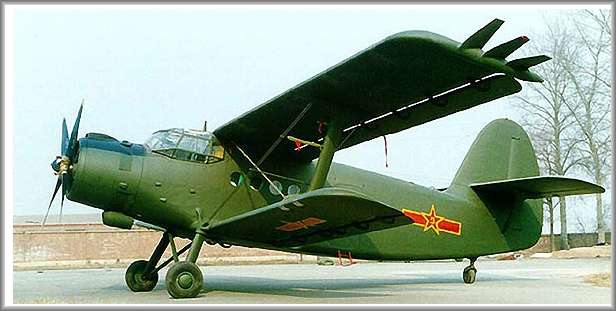Airbourn tool!
Air-Transport ( Aircraft as well as Choppers ).
Aircraft:
IL-76MD
PLAAF's first dedicated heavy-lift military transport, the IL-76MD provides significant improvement in the PLAAF's airlift capability. Each IL-76MD could carry 190 troops, or three armoured vehicles, over a distance of 6,100km, and drop them directly to enemy zone. The aircraft's airdrop and cargo handing equipment allows it to load, unload and air drop paratroopers, materiel and cargo quickly. The onboard avionics is intended to execute airlift and airdrop missions by day and at night, in VFR (visual flight rules) and IFR (instrument flight rules) weather conditions, as well as under hostile air defence conditions. Recent PLA exercises have featured the transport in a variety of operations, demonstrating its ability to fill the airlift gap previously existed with the PLAAF.
Yun-8 Turboprop Transport Aircraft
The Y-8's cargo compartment that can rapidly be reconfigured for the carriage of passengers, paratroops, or stretchers. The size of the cargo compartment is 13.5m X 3m X 2.4m, which can accommodate 96 armed soldiers; or 82 paratroops; or 60 stretchers plus 23 lightly wounded patients and 3 medics; or 16t containers; or 20t cargo. The aircraft can be committed for high- and low-altitude airdrops of troops, vehicles and cargo. The basic variant Y-8 can air drop pallets of 1m, 2m, 4m and 6m size. A single maximum airdrop is 7.4t. A pallet can be air dropped within 6 seconds. The aircraft can take off and land on dirt runways (grass, snow, and muddy).
General characteristics
* Crew: 5: 2 pilots, flight engineer, navigator, radio operator
* Capacity: 18 tons cargo
* Payload: 20,000 kg (44,000 lb)
* Length: 33.10 m (108 ft 7 in)
* Wingspan: 38.00 m (124 ft 8 in)
* Height: 10.53 m (34 ft 7 in)
* Wing area: 121.7 m² (1,310 ft²)
* Empty weight: 28,000 kg (62,000 lb)
* Max takeoff weight: 61,000 kg (130,000 lb)
Yun-7 Turboprop Transport Aircraft
Xi'an Aircraft Factory (now XAC) began to develop the Y-7 twin-engine turboprop passenger plane based on the An-24 Coke in April 1966. The first prototype powered by two 2,550hp turboprop engines made its maiden flight on 25 December 1970. However, the aircraft failed to pass its certification in 1977 due to its underrated engines. A second attempt to get the aircraft certified in 1979 was also unsuccessful. A revised design powered by two improved 2,900hp WJ-5A-1 turboprop engines first flew in 1980, and was finally approved for design finalisation in July 1982. The aircraft was certified for passenger flight in January 1984, with a total of 85 examples were delivered by 1992.
# Crew: 3
# Capacity: 42 paratroopers/50 passengers/24 Casualties on stretcher with 3 medical personnel
# Length: 23.78 m (78 ft 0¾ in)
# Wingspan: 29.20 m (95 ft 9½ in)
# Height: 8.75m (28 ft 8½ in)
# Wing area: 75 m² (807 ft²)
# Empty weight: 16,800 kg (37,038 lb)
# Max takeoff weight: 27,000 kg (59,400 lb)
Y-5
The Y-5 (Yunshu-5, or Yun-5) is a Chinese copy of the Russian Antonov An-2 (NATO codename: Colt) light cargo biplane designed in the 1940s. First flying in December 1957, the Y-5 is still a common utility aircraft in both civil and military services in China today due to its excellent performance and low operating costs. The aircraft's extraordinary slow-flight and STOL capabilities make it particularly suitable for taking-off and landing on unprepared fields. Although originally designed as a small passenger and cargo transport, the airframe is highly adaptable for a wide range of roles including pilot training, parachute jumping, air-to-land supply dropping, etc.
Crew: 2~3
Capacity: 12 passengers
Dimentions: Wingspan 18.19m; Length 12.75m; Height 4.1m
Weight: Max take-off 5,500kg; Max load-carrying capacity 1,500kg; Payload 8~10 armed soliders
Speed: Max speed 256km/h; Cruising speed 220km/h
Range: 1,025km (with maximum fuel); 300km (with maximum load)
Service ceiling: 4,500m
Runway: Take-off 153m; Landing 173m
CIVILIAN TRANSPORTS:
Lockheed L-100 Hercules
The Lockheed L-100 Hercules was the Lockheed Corporation's less successful civilian variant of the prolific C-130 military transport aircraft. Its first flight occurred in 1964. Longer L-100-20 and L-100-30 versions were developed. L-100 production ended in 1992 with 114 aircraft delivered.
* Crew: 3-4: (two pilots, navigator, flight engineer/loadmaster)
* Payload: 51,050 lb (23,150 kg)
* Length: 112 ft 9 in (34.37 m)
* Wingspan: 132 ft 7 in (40.4 m)
* Height: 38 ft 3 in (11.6 m)
* Wing area: 1,745 ft² (162.1 m²)
* Empty weight: 77,740 lb (35,260 kg)
* Max takeoff weight: 155,000 lb (70,300 kg)
* Powerplant: 4× Allison 501-D22A turboprops, 4,510 shp (3,360 kW) each
Performance
* Maximum speed: 308 knots (354 mph, 570 km/h) at 20,000 ft (6,060 m)
* Cruise speed: 292 kn (336 mph, 540 km/h)
* Range: 1,334 nmi (1,535 mi, 2,470 km)
* Ferry range: 4,830 nmi (2,360 mi, 8,950 km)
* Service ceiling: 23,000 ft (7,000 m)
* Rate of climb: 1,830 ft/min (9.3 m/s)
Other Air crafts are same as Mil Aircraft but civilian..












































